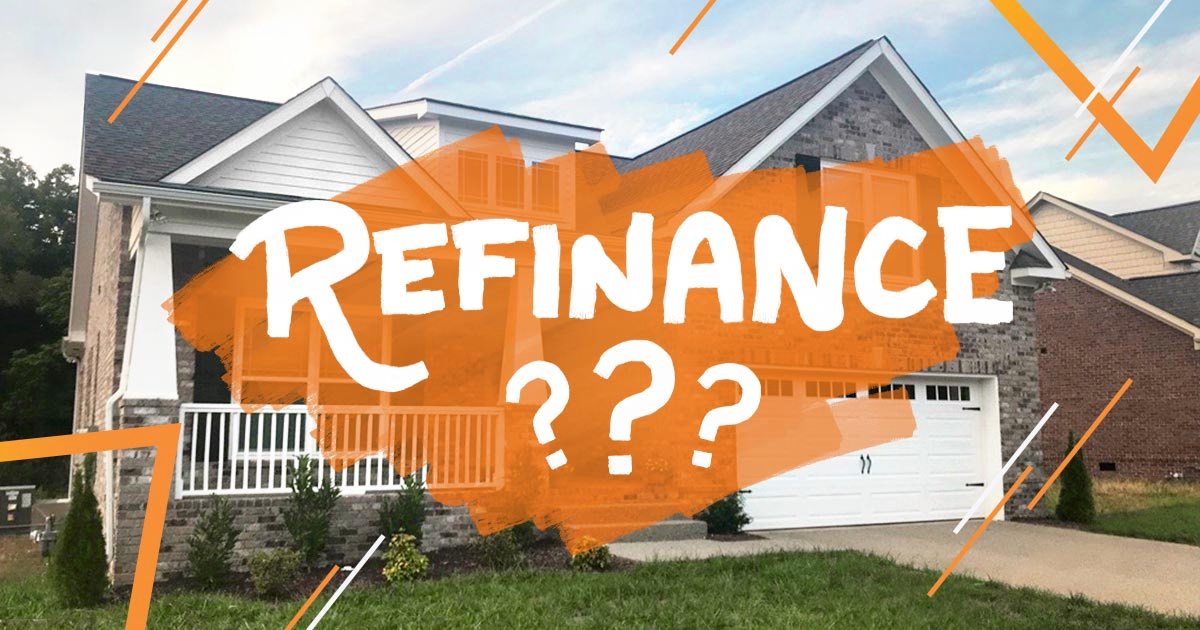Step-by-Step Mortgage Refinance Process in Australia | 2025 Guide
Refinancing your mortgage in Australia can feel like a big move, but it can also be one of your smartest financial choices. Many Australians refinance to lower their monthly repayments, access home equity, or simply switch to a loan with better features. The process may sound complex at first, but it becomes far more manageable when broken down into clear steps.
This guide will walk you through the refinance mortgage process in Australia from start to finish. Each step explains what to expect, how to prepare and what pitfalls to avoid. By the end, you will have a clear plan for refinancing and the confidence to take action if it fits your goals.
What Is Mortgage Refinancing in Australia?
Mortgage refinancing means replacing your current home loan with a new one. In Australia, this can be done with your existing lender or by switching to another bank or credit union. The main goal is to secure a loan that works better for your current financial situation.
Refinancing may lower your interest rate, which reduces repayments. It can also give you access to home equity. For example, if your property value has gone up, you might borrow against the equity to fund renovations or pay off high-interest debts. Many Australians also refinance to change loan types, such as moving from a fixed rate to a variable rate.
At its core, refinancing is about finding a better fit. As your life and financial goals change over time, your mortgage should adapt.
Why Australians Choose to Refinance Their Mortgage
Refinancing is not just about chasing lower rates. Australians refinance for a range of reasons. Let’s look at the most common ones.
Lowering Monthly Repayments
One of the biggest reasons to refinance is to reduce monthly repayments. Even a small cut in interest rates can make a noticeable difference over the life of a loan. This helps free up cash for everyday expenses or savings goals.
Accessing Home Equity for Big Expenses
Another strong reason is tapping into home equity. Homeowners often use equity to fund renovations, buy an investment property or cover education costs. Refinancing makes this possible by restructuring the loan.
Consolidating Multiple Debts
Australians also refinance to roll personal loans or credit card debt into their mortgage. This can simplify repayments and reduce the stress of juggling multiple accounts. Since mortgage rates are usually lower than personal loan rates, it can also save money.
How the Mortgage Refinance Process Works in Australia
Understanding why refinancing is popular is useful, but the next stage is to look at your own mortgage. The process starts with a careful review of your current loan. Knowing where you stand lets you see whether refinancing will benefit you.
Step 1 – Assess Your Current Home Loan Situation
The first step in the refinance process is looking closely at your existing mortgage.
Reviewing Interest Rates and Loan Features
Start by checking your current interest rate and comparing it to average market rates in Australia. If your rate is higher than what lenders now offer, refinancing could make sense. Also, review loan features like offset accounts, redraw facilities, and repayment flexibility.
Checking for Break Fees or Exit Charges
Before moving forward, find out whether leaving your current loan comes with costs. Fixed-rate loans often have break fees. Some lenders also charge exit fees. These costs must be compared with the potential savings.
A careful review at this stage helps you avoid costly surprises later.
Step 2 – Compare Mortgage Refinancing Options in Australia
Once you know where you stand, the next step is research. Not all loans are created equal, and comparing options gives you a strong position when speaking with lenders.
Fixed vs Variable Interest Rates Explained
When refinancing, you’ll usually choose between fixed and variable rates. Fixed rates lock your repayment amount for a set period, offering certainty but less flexibility. Variable rates move with the market, which may save you money if rates fall, but can also rise if the economy shifts. Some Australians choose split loans that combine both.
Using Online Mortgage Comparison Tools
Online calculators and comparison sites allow you to see side-by-side differences in rates, fees, and features. This research helps you identify the best options before negotiating with banks or brokers.
Step 3 – Calculate the Costs of Refinancing
Refinancing can save you money, but it also comes with costs. Knowing these upfront prevents disappointment later.
Common Fees When Refinancing in Australia
Fees may include application charges, property valuation costs, discharge fees from your old lender, and government registration costs. These vary by lender and state. Some banks offer refinance rebates to offset expenses, so always check for promotions.
How to Work Out Your Break-Even Point
The break-even point is when your savings from lower repayments outweigh the upfront costs. For example, if refinancing saves you $200 a month but costs $2,000, your break-even point is 10 months. Understanding this number makes it easier to decide if refinancing is worthwhile.
Step 4 – Apply for the New Mortgage
Once you’ve compared loans and calculated costs, it’s time to apply.
Documents Needed for Refinancing in Australia
Lenders usually ask for proof of income, identification, property details, and current loan statements. Preparing recent payslips, bank statements, and tax returns will speed things up.
Credit Score and Eligibility Requirements
Your credit score plays a big role in refinancing approval. Australian lenders check repayment history, loan limits, and other debts. A good score improves your chances of qualifying for lower rates. If your score is low, consider improving it before applying.
Step 5 – Loan Approval and Settlement Process
Once you’ve applied, the lender will review your application and property.
Property Valuation and Lender Assessment
Most lenders conduct a property valuation to confirm the home’s worth. This ensures the loan-to-value ratio is acceptable. They also assess your income and expenses to confirm your ability to meet repayments.
Understanding the Mortgage Settlement Timeline
The settlement process usually takes four to six weeks. During this time, your new lender arranges to pay off your old loan. Once this is complete, you officially switch to your new mortgage.
Step 6 – Switching to Your New Home Loan
The final step is adjusting to the new mortgage and ensuring everything runs smoothly.
How the Transition Process Works
Your new lender will manage the switch from your old bank. Repayments will now go to your new loan account. Double-check that direct debits, offset accounts, and redraw features are set up correctly.
Tips to Avoid Refinancing Mistakes
Avoid refinancing mistakes by reading the fine print, checking for hidden fees, and resisting the urge to refinance too often. It’s tempting to chase small savings, but switching too frequently can cost more in the long run. Focus on a loan that supports your financial goals today and in the future.
Conclusion
Refinancing a mortgage in Australia is a powerful way to improve your financial position. Whether the goal is lower repayments, access to equity, or simpler debt management, refinancing puts control back in your hands.
By following the process step by step—assessing your current loan, comparing options, checking costs, applying, and making the switch—you can confidently approach refinancing. Each stage matters, and preparing ensures you’ll get the most from the change.
A mortgage is a long-term commitment, but it doesn’t have to stay the same forever. If your current loan no longer meets your needs, refinancing could be the key to creating a better financial future.
Key Takeaways
- Refinancing means replacing your current mortgage with a new one that better suits your needs.
- Australians refinance mainly to lower repayments, access equity, or consolidate debts.
- Reviewing your current loan helps you see if switching makes financial sense.
- Comparing fixed, variable, and split loans ensures you find the right fit.
- Costs like application fees and discharge charges must be weighed against savings.
- Having documents ready and maintaining a solid credit score speeds up approval.
- Settlement usually takes four to six weeks, and the lender manages most of the process.
- Reading loan terms carefully helps avoid mistakes and hidden costs.
Frequently Asked Questions
How often can you refinance in Australia?
There’s no set limit, but frequent refinancing can bring costs. Most homeowners wait one or two years before refinancing again.
Is refinancing worth it in 2025?
It depends on your situation. If rates have dropped or your goals have changed, refinancing could save money. Always compare savings with costs.
Can you refinance with bad credit?
Yes, but choices may be limited. Specialist lenders sometimes accept borrowers with weaker credit, though rates may be higher.
How long does the refinance process take?
The process usually takes four to six weeks. The exact time depends on how fast you provide documents and how quickly the lender processes them.
Do you need a lawyer to refinance a mortgage?
Most Australians don’t need a lawyer. Lenders usually handle the legal side, but legal advice can help if the situation is complex.



